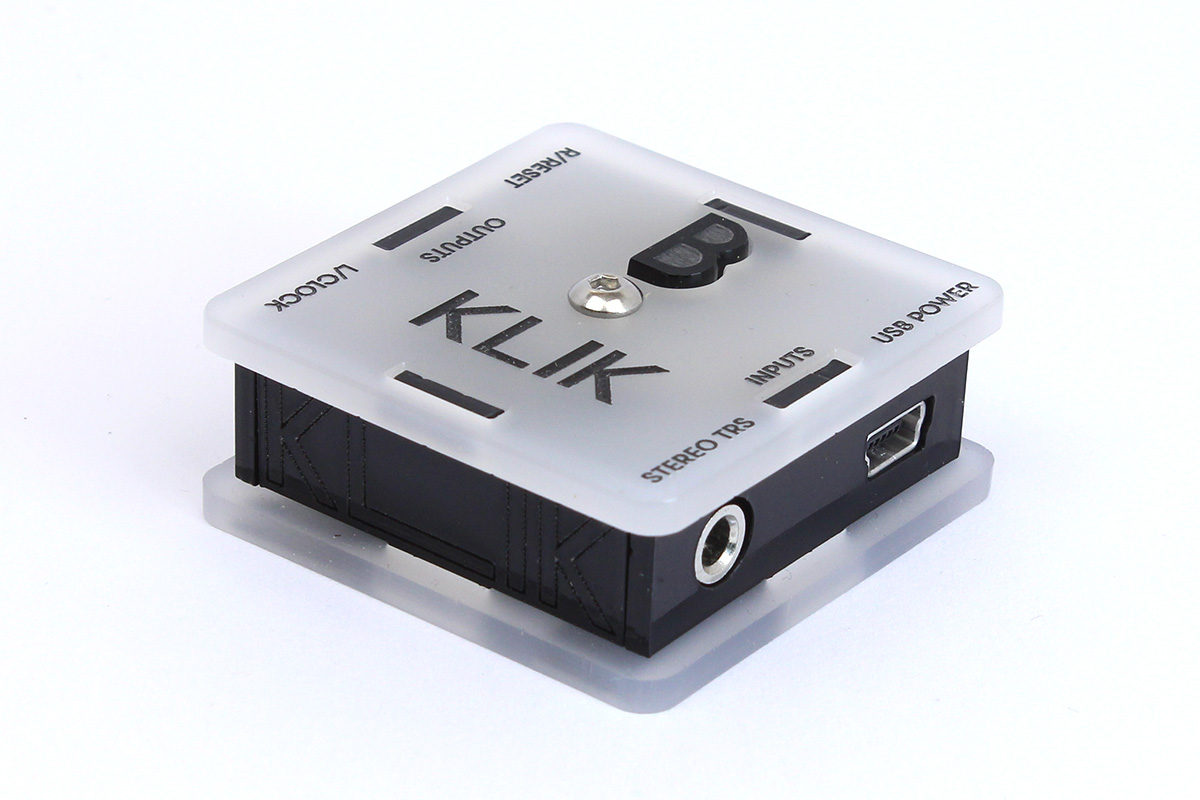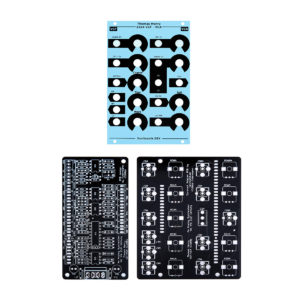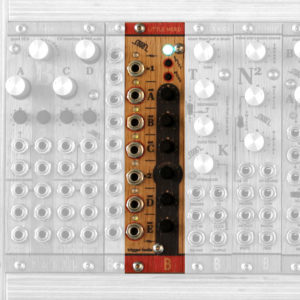Opis
Bastl Instruments KLIK
Klik is a synchronisation device that enables you to make analog, rock solid sync signals from your computer and your HW synths. The KLIK revives the old-school sync technique of using an audio track for synchronisation purposes. Record your synths exactly on the grid into your DAW while compensating for the latency of your sound card. Jam really tight between your computer and your HW and add groove to your clock.
The KLIK converts audio line level (or headphone) output signals from any sound card and makes perfect synchronisation pulses in the modular level.
KLIK converts two signals (left and right input) – typically clock and reset signal. The reset signal also has a button which you can use to re-sync your HW or use for sending manual gate signals. You can send rhythmical triggers thru the KLIK as well.
With KLIK you can use any channel of your soundcard or repurpose the unused headphone jack on your macbook by creating aggregate device. Or use an old mp3 player as a stable clock source with presets!
And as a bonus if you run any audio signal thru the KLIK to apply a harsh bitcrushing effect!
Please note it is designed to only transmit clock / trigger / gate information. Its output is either low or high 0 or 5V. It doesn’t output continuous CV signals.
AUDIO BASED CLOCK VS. MIDI CLOCK
We’re NOT suggesting you to stop using midi clocks ! They’re awesome for a lot of stuff, but sometimes other methods are more suitable.
So what is the advantage of audio clock in comparison to midi clock? Well midi clock is a protocol where there are 24 clock messages sent in the duration of one quarter note. Which is 6 messages every 16th note. Each of these messages takes about quarter of a millisecond to transmit in the serial line at defined speed of the MIDI protocol.
MIDI clock works great for most of the stuff , but converting it to analog clock requires another device with micro computer in it which converts the serially transmitted message to the pulse information.
At the beginning of the process the computer has to determine when is the right time to send the midi clock. It then goes into a queue of midi messages and is transmitted as soon as possible. On the side of the receiving device the clock has to be interpreted and calculated to see what is the response of the device to the clock. That is a lot of computational work for information that is of a binary character saying simply “NOW”.
With synchronising through audio all that stuff is being skipped. The audio processes in the computers are rather high priority because even a slight shift of a quarter millisecond between the audio channels can cause phasing artifacts. Besides that the MIDI clock cannot be shifted back and forth (common feature audio track delay / pre-delay) and most likely is not the best idea to put groove on it.
Features:
- Mini USB B Power 5V (overvoltage / overcurrent / polarity protected)
- TRS 3.5mm stereo line level input
- 2 x TR 3.5mm mono outputs
- 0 or 5V trigger gate outputs
- all jacks are overvoltage / polarity protected
- Manual button gate for R / Reset channel
- Led indication per channel
- Current draw <10mA
- Size 44 x 44 mm
Downloads:








Opinie
Na razie nie ma opinii o produkcie.